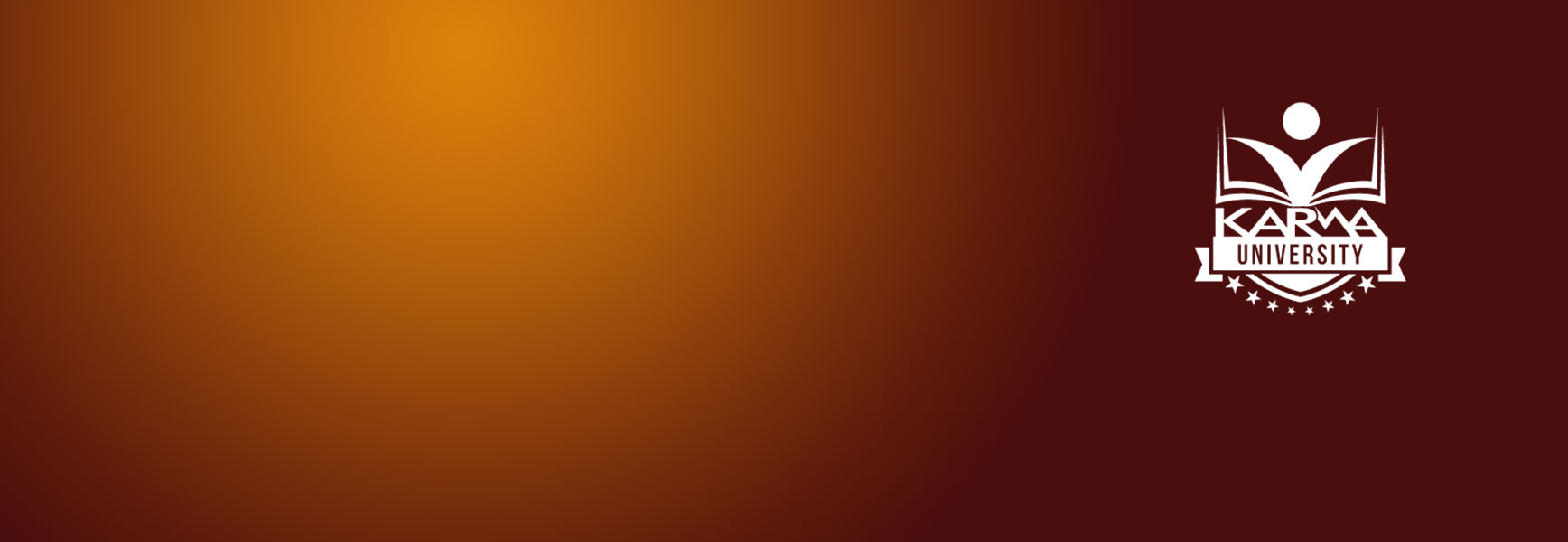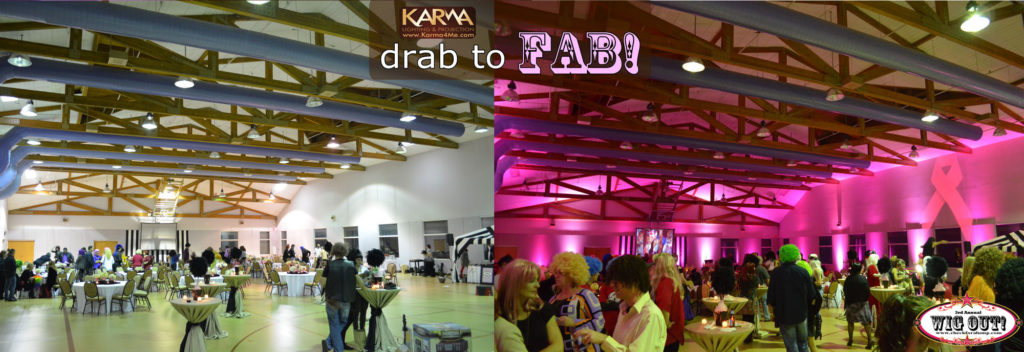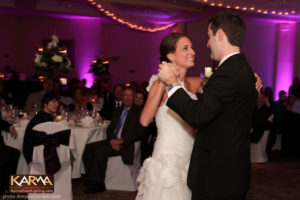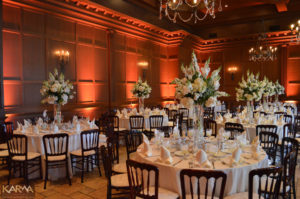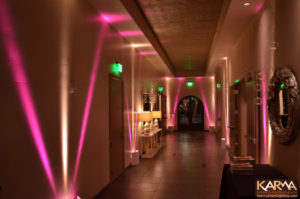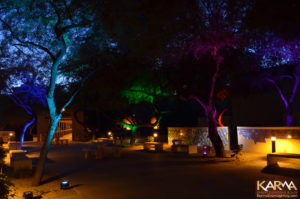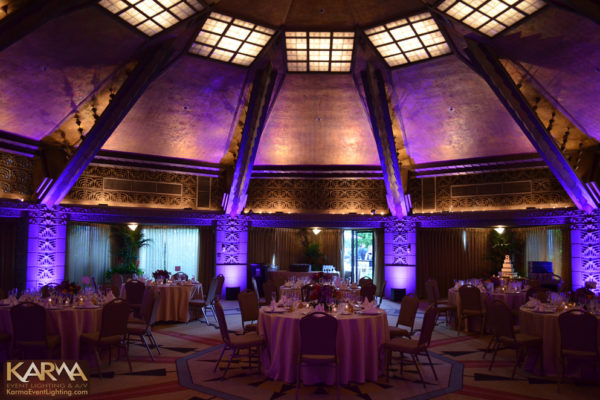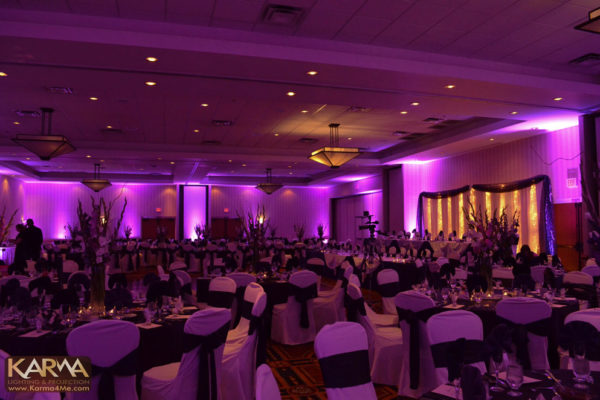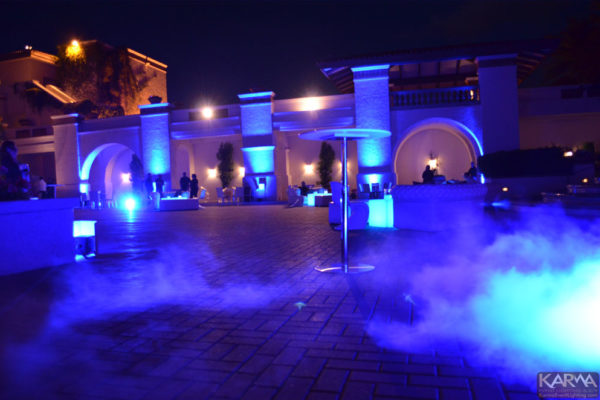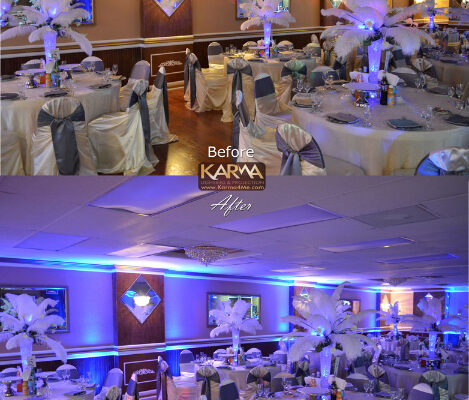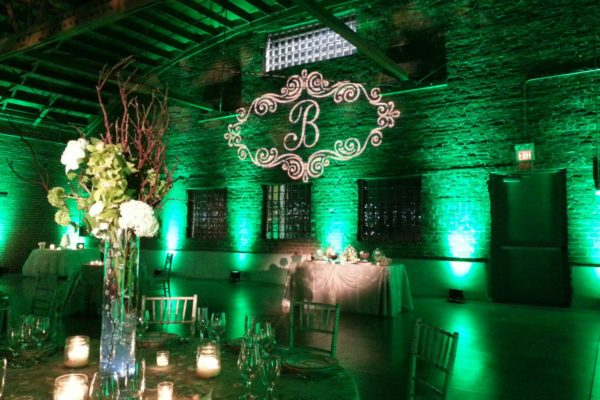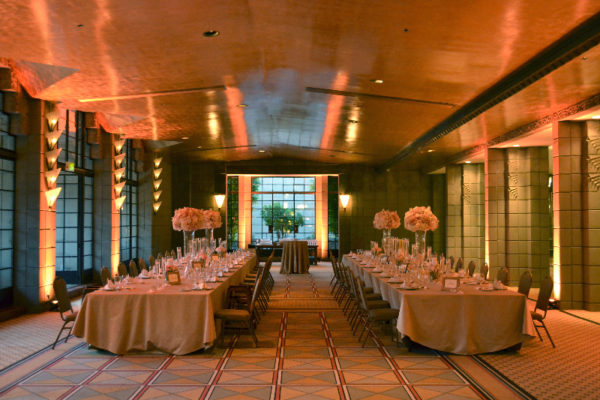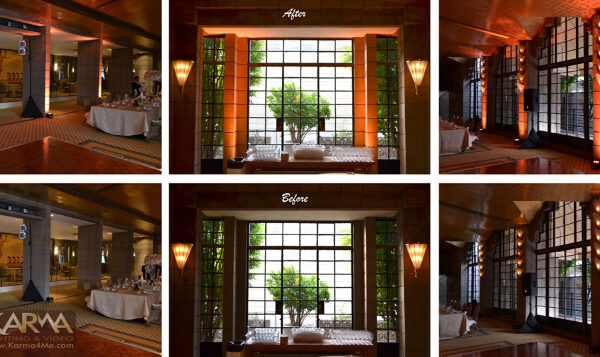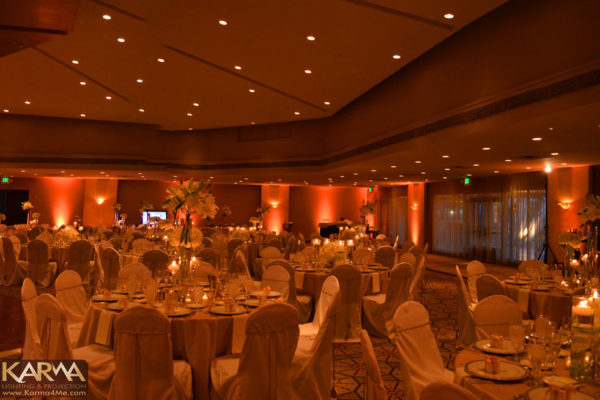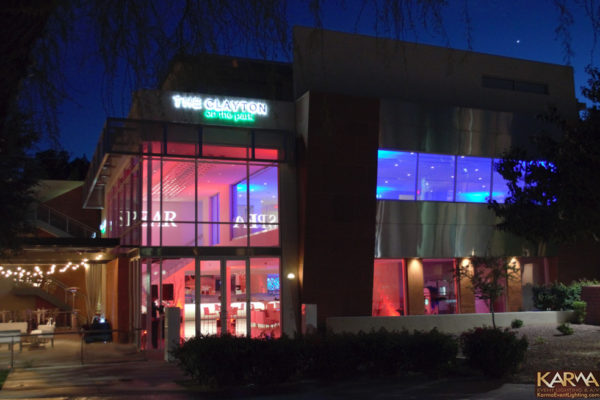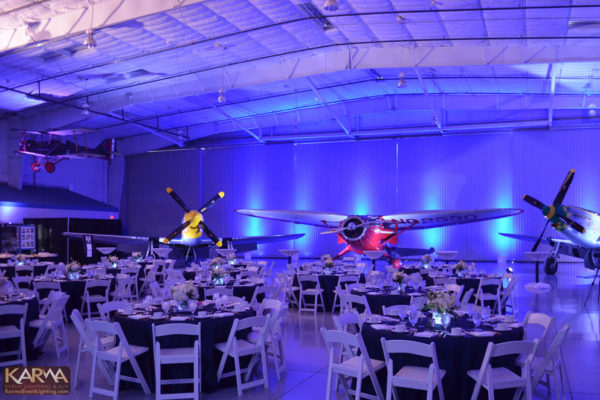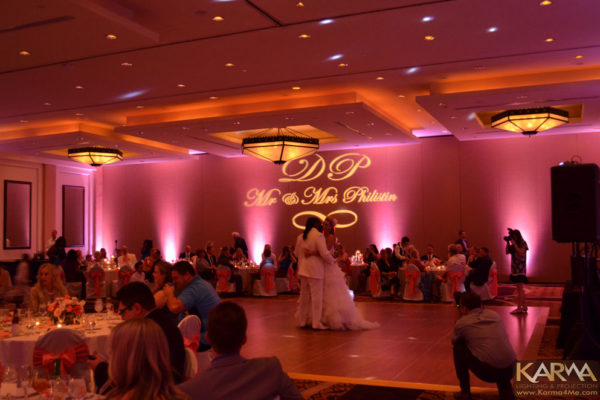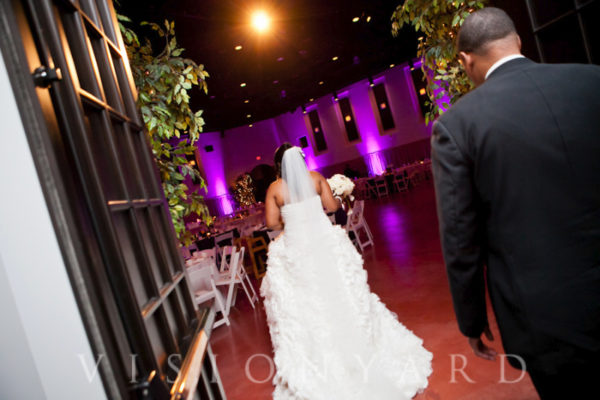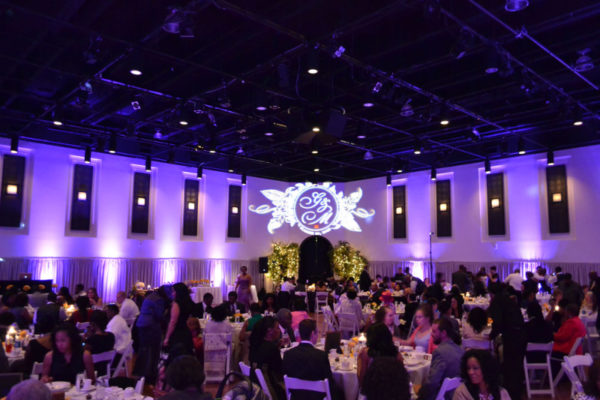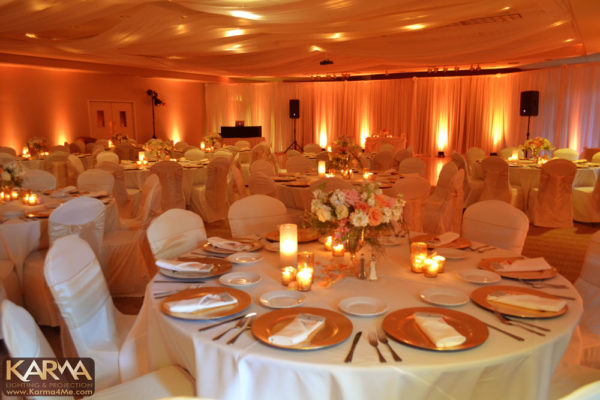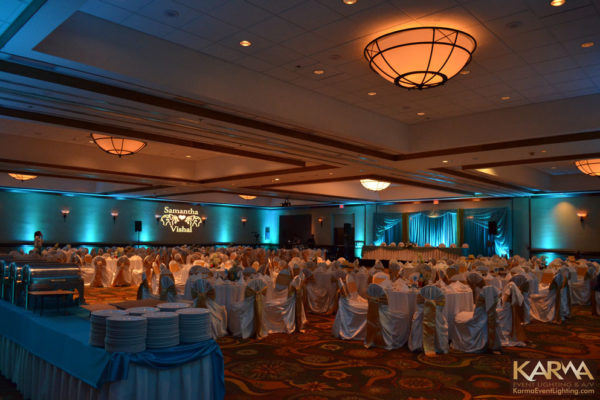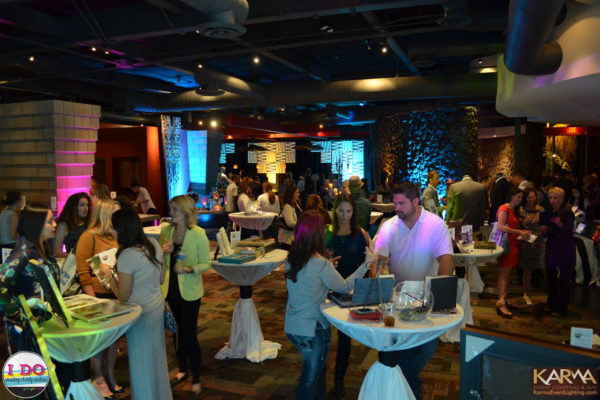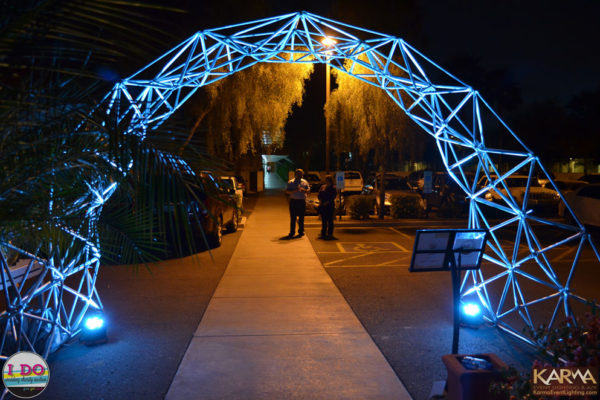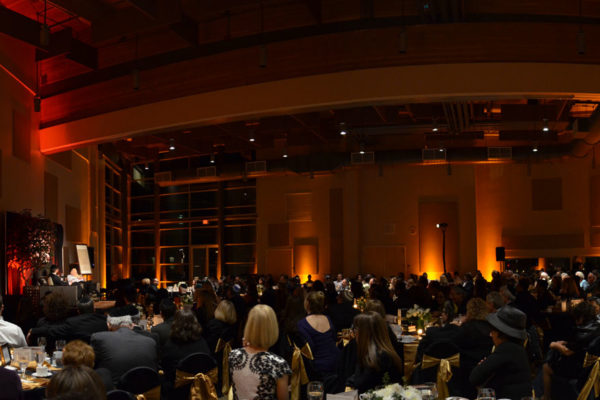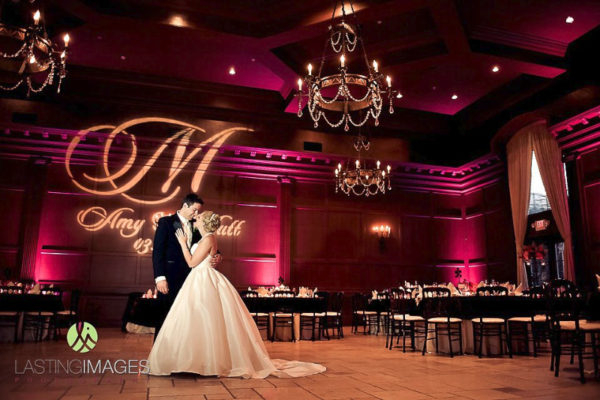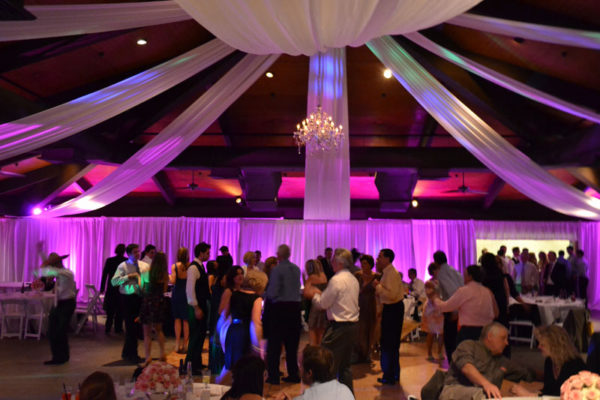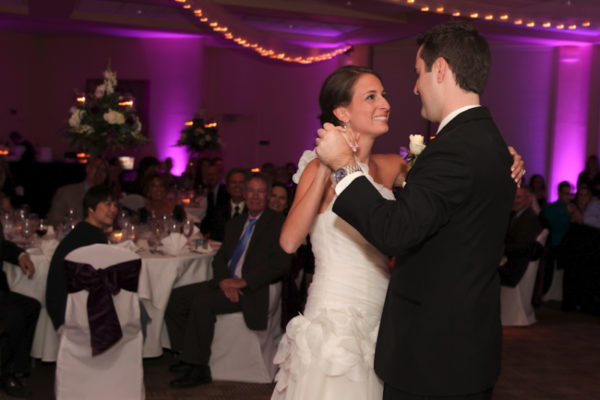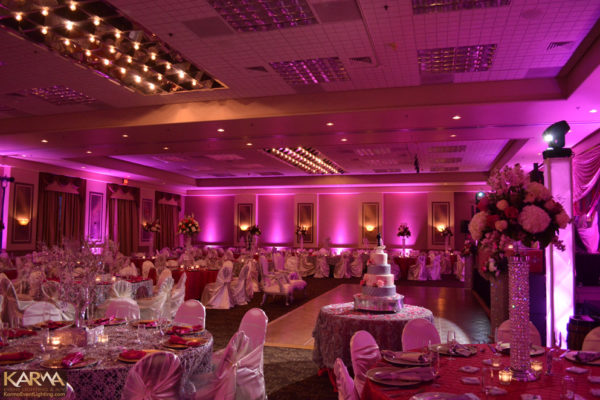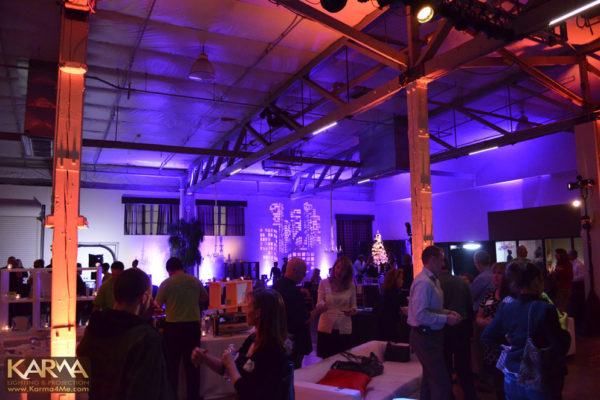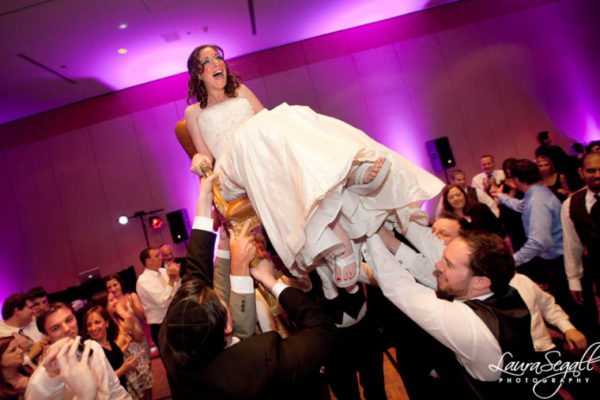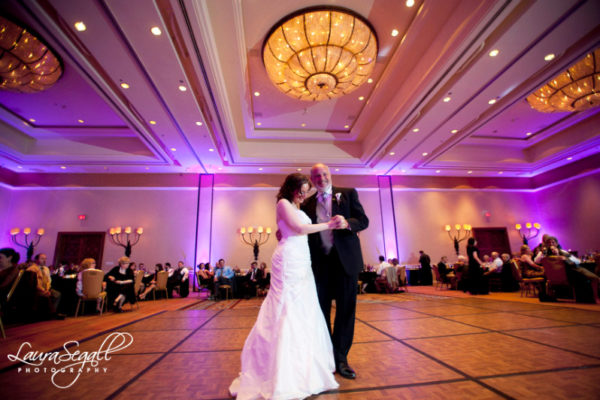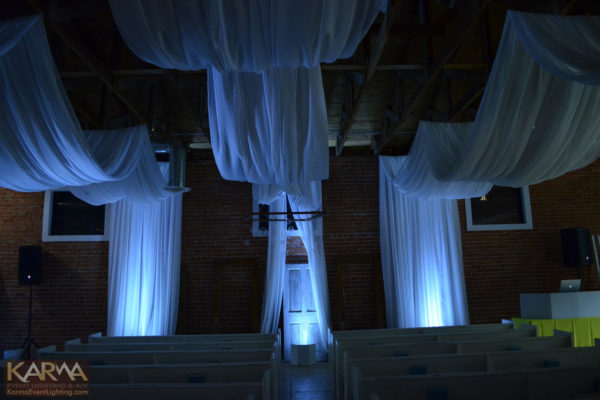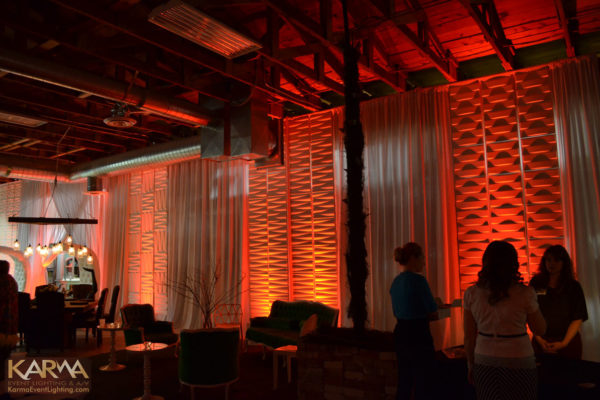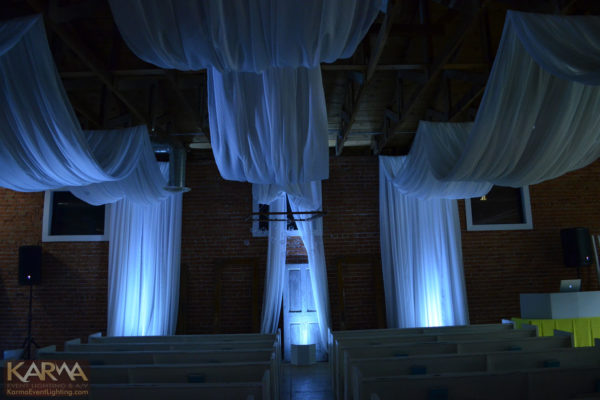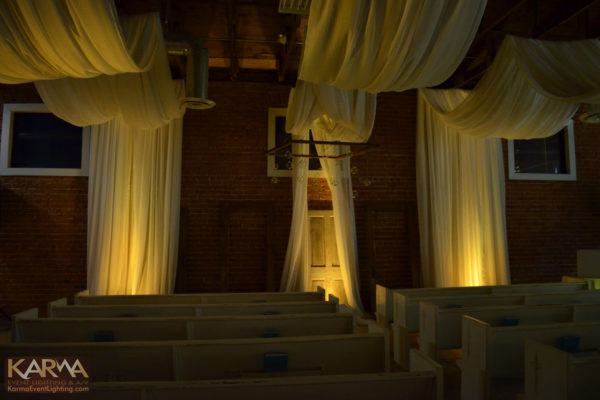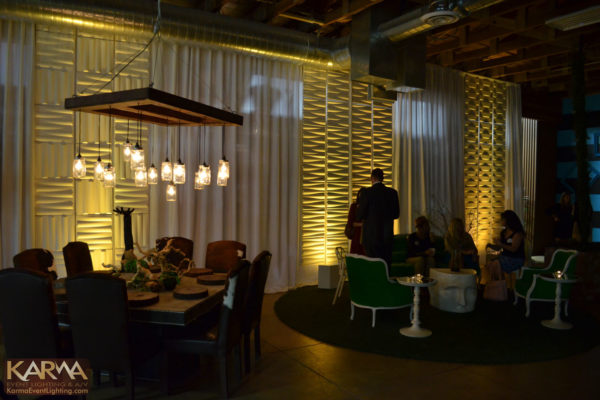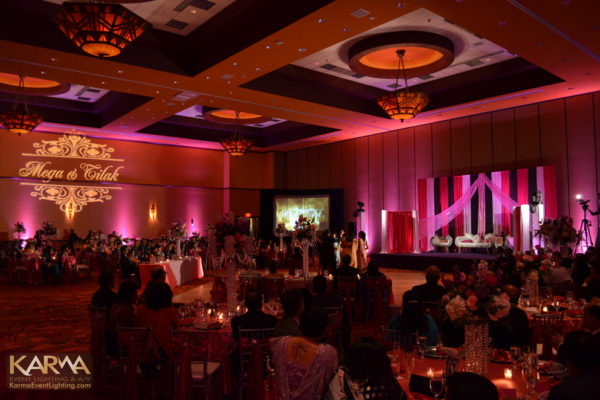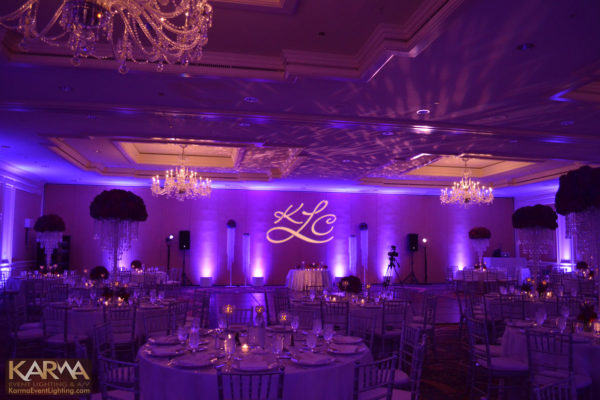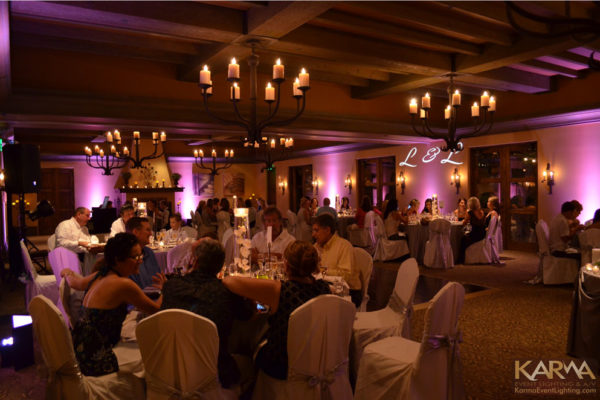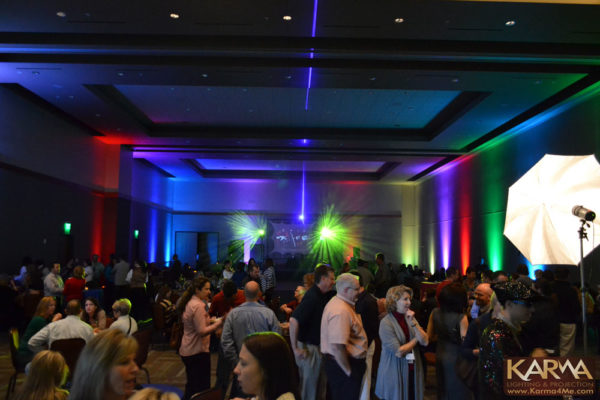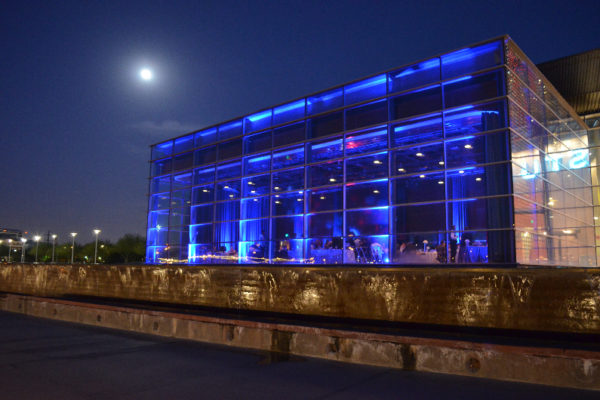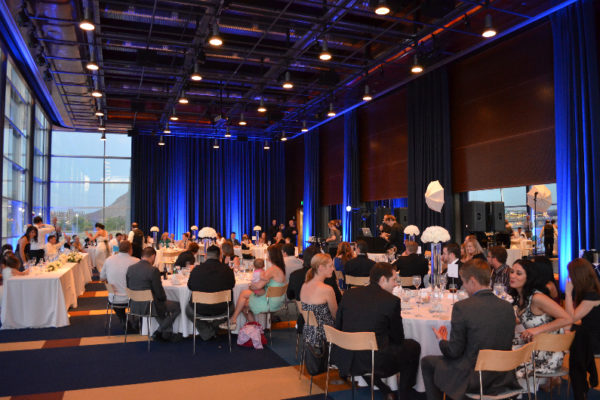Event & Wedding Lighting Ideas Part 1 – Uplighting!
Uplighting is probably the most popular lighting effect used in weddings right now. It’s been around for many years but has recently become more prevalent with the introduction of LED technology. Uplighting is called so because it refers to the direction that the light is projected onto a surface. Fixtures are placed at a low position around the room such as at the base of a wall or column. The lights are pointed up so the corresponding beams of light highlight the wall and shoot towards the ceiling
Colored uplighting is an immediate way to bring a beautiful and stimulating feel to your event. Uplighting adds depth and a personal touch to your event by painting your room with light. The effect can be quite dramatic and help define a space, add color as well as dimension to an area and complement your event’s color scheme. Color elicits emotions and responses. Create a true Wow effect by turning your reception into a beautiful canvas of light. From soft and romantic to vibrant and lively, lighting design can be created to capture your personal tastes and preferences. Prices for Uplighting can vary depending on the size or type of venue, indoor or outdoor, and just personal preference of coverage.
Uplighting can be single or multiple static colors or programmed to change colors throughout the night. One popular trend is to have the room chance color from Dinner to Dancing. I.e., Amber during dinner, Red for the first dance and Purple during open dancing. Or you can get even crazier with it and go from a solid color to the entire room changing colors to the beat of the music for the open dancing section. The possibilities are endless – but of course, extra costs come with more complicated programming. You can see some great examples in this video here…
BONUS!!!
Photographers LOVE Uplighting! Uplighting provides that extra depth and dimension that make photos come alive! Uplighting helps illuminate the areas beyond the flash so you’re a beautiful venue or outdoor area is visible in all your photos.
RGBWAUV… Whaaaaaat?
I know this looks confusing but it’s actually pretty simple. RGBWAU are the colors an uplight fixture can achieve = Red, Green, Blue, White, Amber & UV. When LED uplights first came out a few years ago, they were just RGB. Therefore they had to mix Red, Green & Blue to achieve colors like Purple, Pink, etc. These older fixtures had trouble getting colors like Amber, White and Yellow. The white looked ghostly blue, the amber was dark red-orange and yellow was a sickly green. As technology advanced, so did our color options. Now we have dedicated LED diodes for amber, white and now UV so our color choices are endless and quite beautiful! We can get those pure ambers and natural whites. We can even get soft blushes and pastels. The only colors that LED uplights still have trouble with are the dark saturated plums, reds, and blues. There are still some tricks to get close to them but if you think about it, a dark color is just a less bright light. In these scenarios, we’ll find a hue that complements the event’s colors.
How many lights?
If you asked multiple companies to give you a quote for uplighting the same room, you’ll probably get a different number of lights. There are several reasons for this.
1. Washes vs Tight Columns – Not all uplights are created equally. Aside from the number of colors each light can produce, there is also the shape of the light beam. Some lights will illuminate a large area with a wide soft-edged color wash while others have smaller hard-edged beams. Therefore to properly fill up an entire ballroom, you will need more of the smaller lights. The light count difference can be quite extreme, sometimes even doubling the number of lights. For example, one company will quote 12-25 lights for a nice even coverage in most ballrooms while other companies will quote 30-40 lights for that same room. This isn’t to say one is better than the other. The smaller striped beam look might be a better fit for some events. And you can do some cool effects with those lights like in this photo below. But the overall trend is to smoothly wash the entire room with broader beams of light. So make sure to ask your lighting company for photos of their uplights to make sure they fit your desired feel.
2. Room Layouts can affect the number of lights used. Our own light count will vary sometimes for the same room depending on that specific event’s layout. For example, if an event has a long buffet table up against a wall, we can’t put lights there. The same goes for a guest book table placed between two doors leaving us no room to place a light. We try to achieve a symmetrical lighting layout so one side of the room won’t be in the dark or feel unbalanced. Aside from adding color or light to an area, lighting can also be used to create focal points. In an empty room, having 2 uplights behind the sweetheart table is certainly going to bring attention to the bride & groom.
3. Desired Effect… Sometimes we don’t want to wash the entire room in color and can use fewer lights to highlight certain areas or architecture of the room. For example, lighting can be used to create a backdrop for the head table, cake, entrance doors, or stage. This is also helpful for clients on a budget. Say we typically use 12 lights in a certain room – a light in each corner (4) and 2 on each wall (8) = 12 lights. Removing the 4 lights in the corners won’t ruin the lighting. It just changes the overall feel. There are many scenarios where we recommend against lighting up the corners anyways. This is typically when an event with a smaller guest count is held in a larger ballroom. By lighting up the entire room, it shows just how big it is and can make the room feel cavernous. Lighting can be used to define the area and make the big ballroom feel more intimate just by bringing the uplights in on the wall more.
Battery vs Powered
As far as color and output are concerned there is no difference between battery and powered lights. The main difference however is the flexibility of placement! Some venues will have great power with outlets every 20’ but this is certainly not the norm. I’ve even been to some historic venues where there was NO accessible power. The only way around this is to use battery-powered. Aside from the access to power, there is a wonderful aesthetic value of using battery lights. No more cables or tape are needed and therefore won’t be eyesores or trip hazards. Some venues don’t even allow you to tape onto the floor or walls because it ruins the paint or finishes. And of course, there is the ultimate benefit of using battery uplights for outdoor events. Unless you have a tree sprouting electrical outlets, power for outdoor events can be a nightmare. Battery lighting solves this issue.
Traditional vs. LED
Traditional uplighting used 2-500 watt par cans. These were basically headlights in a can and could get very hot. You also only had 1 color choice for the night. Hardly anyone uses these anymore but still enough to double-check. LEDs use less power and are far more efficient than conventional lighting. They are also safer because they are cool to the touch so you don’t have to worry about anyone burning themselves on the light by accident. LEDs also offer a rainbow of colors to choose from.
COST & REQUIREMENTS
Average cost is $20-50 per light with most rooms requiring 8-40 lights (coverage depends on the lighting fixture, desired result & room size)
DIY or DON’T?
There are several new websites offering DIY solutions. Basically, the lights are $19 each for a 2-week rental which includes shipping. These lights are usually less powerful, therefore requiring more lights, and limited to preset color choices. Other concerns are if they break a light or even worse if someone trips over one – are they insured? But overall, this is a decent solution for seriously budget-minded clients that don’t mind doing all of the setup & breakdown themselves.
Check out some of our Uplighting Photos to get some good ideas for your next event! (if the gallery doesn’t load the first time just hit refresh)

